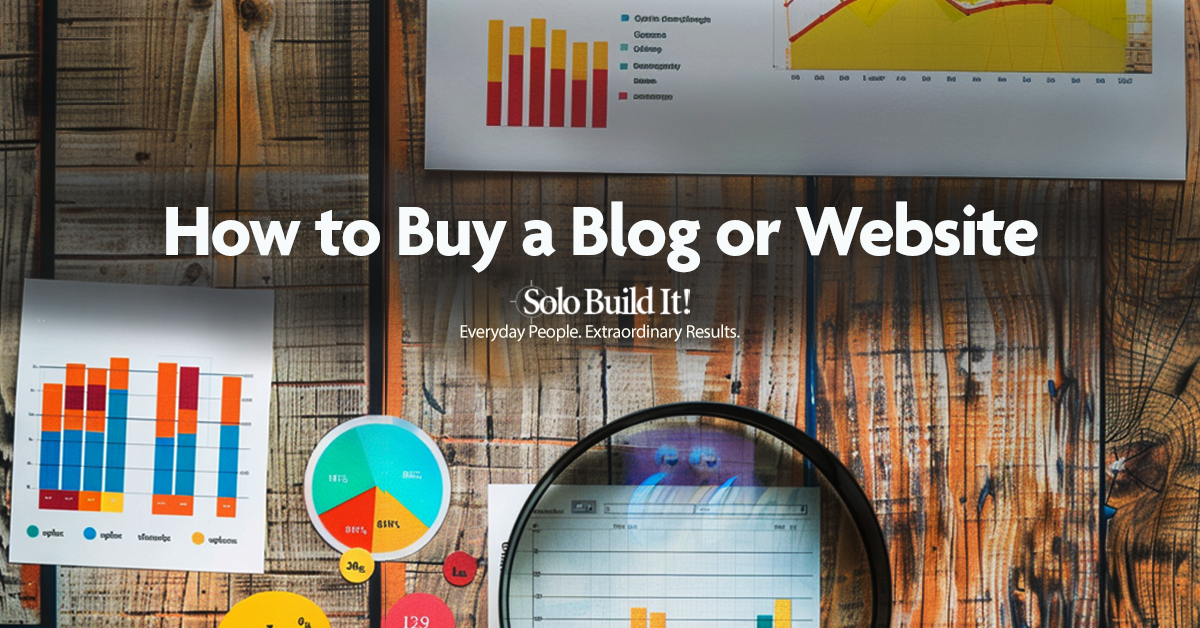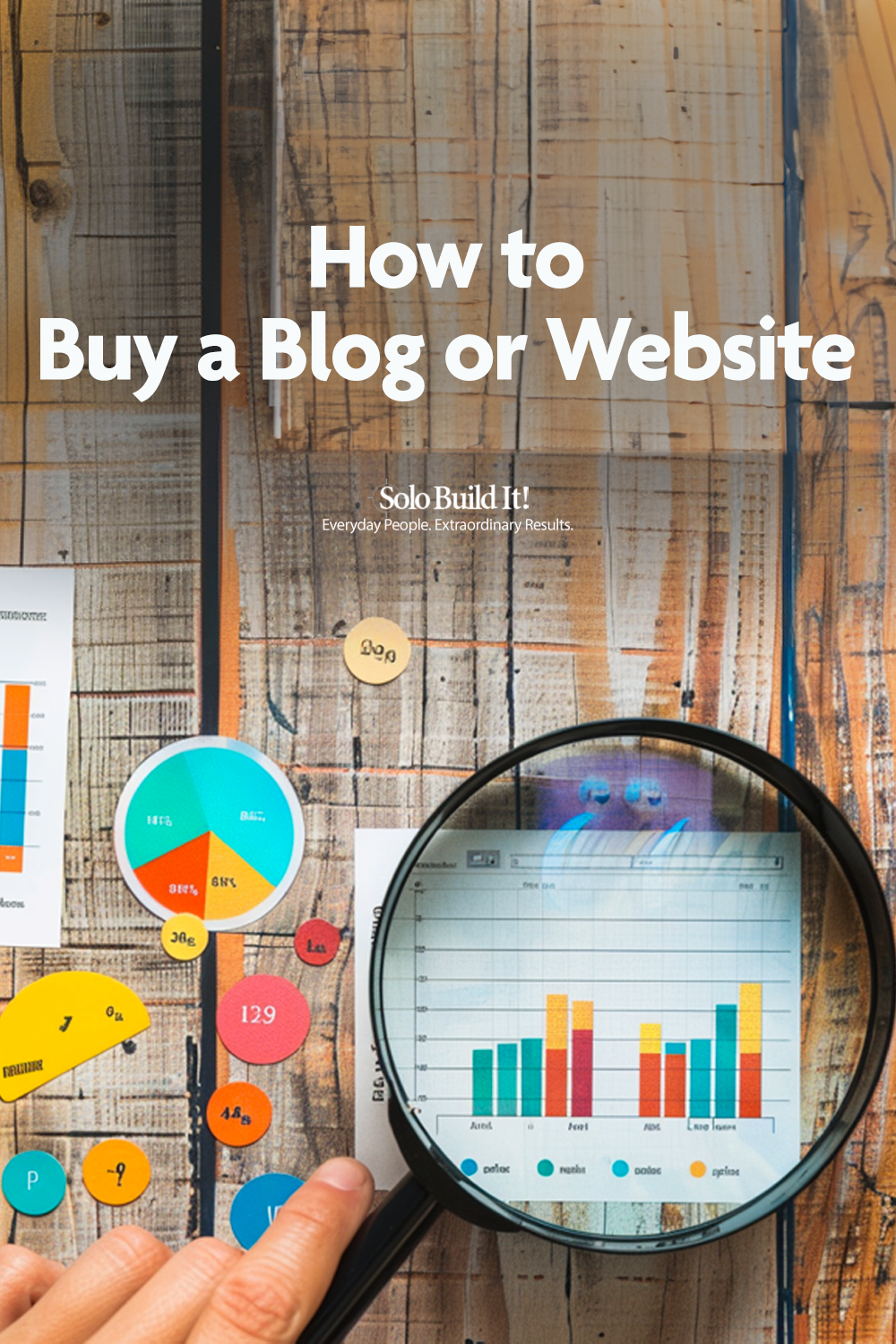
Ever stare at a blank page, intimidated by the prospect of building a website or blog from scratch? The long list of tasks, the learning curve—it’s enough to send you fleeing for the comfort of a Netflix binge.
But what if there was another option?
Buying a website can be a strategic leapfrog into the online arena. It’s a game-changer for those who want to hit the ground running. But you have to know what you’re doing.
So, buckle up, as we show you how to buy a blog or website, and go over the pros, cons and alternatives.
Step 1: Choose a Niche That Appeals to You
In order for a blog or website to be successful, it needs a solid foundation. This isn’t just about choosing a trendy topic; it’s about aligning your passions, expertise and market potential.
Some examples of broad niches you may consider include:
- Animals and pet care
- Technology and electronics
- Gardening
- Cooking
- Fitness and healthy living
- Home improvement
- Art and design
- Personal finance
- Stocks and investment
- Beauty, makeup, and skincare
- Fashion
- Business
For even more inspiration, browse through this list of 500 successful websites created with Solo Build It!.
But how do you choose the right niche for you? Here are a few factors to help you make a well-informed decision:
Passion
What topics make you lose track of time as you get lost in research rabbit holes?
This intrinsic motivation will fuel your content creation and keep you invested long after the initial excitement fades.
Remember, passion is contagious. Your readers will pick up on your genuine enthusiasm (or lack of it).
Expertise
After following your interests, think about the unique skills or knowledge you bring to the table.
This tip ensures you buy a blog or website you can keep running by adding high-quality content that sets you apart from the crowd.
Don’t underestimate the power of niche-specific insights. They can turn you into a trusted authority in your corner of the internet.
Market Potential
Passion and expertise are fantastic, but you also need an audience. That’s why it’s important to research several possible niches to ensure they have both traffic and monetization potential.
Tools like Google Trends, SEMrush and Solo Build It!’s Brainstorm It! can help you gauge search volume. They also offer some much-needed data on competition and potential advertising revenue.
Keep in mind that a niche that’s too small is like a one-horse town, while a niche that is too broad is like Times Square on New Year’s Eve. So, it’s important to find that sweet spot where your audience is seeking out your topic-specific info and appreciate your unique perspective.
Step 2: Browse Popular Online Marketplaces
Many websites are dedicated to people who want to buy and sell online businesses, domain names, and blogs.
For example, Flippa, Empire Flippers, and Facebook’s Exchange Marketplace are teeming with websites of all shapes and sizes. It can be overwhelming to navigate unless you equip yourself with the right tools to track down your preferences.
Most platforms allow you to filter by niche, so hone your search to websites within your chosen categories. This saves you time and prevents you from getting distracted by irrelevant listings.
Next, try to focus on websites with consistent traffic flow, ideally generated by organic search. Look for listings that provide detailed traffic analytics, like monthly visitors, unique visitors and average session duration.
Also, prioritize options with established revenue streams, whether through advertising, affiliate marketing, or direct sales. Websites that rely solely on traffic aren’t as reliable because monetization potential is key to long-term success.
The step after that is to research comparable websites in your niche to get a sense of fair market value.
Don’t overpay for a fixer-upper blog or website. At the same time, don’t be afraid to invest in a high-quality website with proven potential. Your research will make things clear.
Step 3: Dig Deeper for All the Important Details
Once you’ve chosen some promising candidates, the real research must begin. You’ll want to determine which blog or website to invest in. Let’s delve into the hidden corners of your potential online community.
Financial Details
Numbers don’t lie, and website financials are your friend—even if you don’t love numbers.
Start by asking for access to detailed income statements, revenue sources and expense reports. Verify everything—from ad network payouts to affiliate commissions.
A thorough financial investigation helps prevent the dangers of inflated claims. No one wants to deal with those.
Tracking Organic Traffic
Website traffic is the driving force behind any online venture. For that reason, it’s important to dig deeper into surface-level visitor counts.
Ask for access to analytics platforms like Google Search Console and Google Analytics. This step allows you to scrutinize traffic sources and website engagement.
Is the traffic organic, paid, or a mix of both? Unmasking the true nature of website traffic is crucial before you hand over your hard-earned money.

Blog Content Analysis
Next, it’s crucial to analyze the existing content with a critical eye.
Is the website or blog well-written, informative and engaging? Does it resonate with your target audience? Or is it full of outdated articles and stale blog posts?
Because you’re inheriting content along with the website, ensure it aligns with your vision and quality standards.
Other Technical Considerations
Don’t let the website’s shiny front-end fool you. Lift the hood, peek at the technical engine, and ask yourself some questions; for example:
- Is the website built on a stable platform?
- Is it mobile-friendly and optimized?
- Are there any lurking technical gremlins waiting to pounce?
- Do you know the platform well enough to manage a site or blog on it?
A website with hidden technical issues can become a bottomless money pit, draining your resources and patience. So, choose one with a known platform where you know you can hire help if needed in the future.
Step 4: Negotiate Like a Pro
Armed with your findings on website market values, it’s time to negotiate the price of the website or blog you’ve finally settled on.
The buying process begins by presenting a fair counteroffer that reflects the website’s strengths and weaknesses. You should also factor in your vision for its future.
While negotiating, always treat the seller with professionalism and open communication.
Also, don’t get so attached to a specific website that you overspend or compromise your financial stability. If the negotiation reaches a dead end, you can simply walk away and search for another blog or site that matches your budget.
This way, you’ll secure a fair price, build rapport with the seller, and pave the way for a smooth transition to your new online business.
Step 5: Use Escrow for a Secure Buying Process
To play it safe, it’s best to secure your purchase with Escrow.com. For those who don’t know what Escrow is, it’s a secure virtual vault that holds your funds until the website is officially yours.
Think peace of mind and fraud prevention, supercharged negotiation, and a safe haven for both buyer and seller. Deposit your funds, finalize the transfer and watch Escrow verify it all.
Step 6: (Re)Launch Your Newly Bought Website
Congratulations! You now hold the keys to your own pre-owned website or blog. It’s time to transform your acquisition into a launchpad for success.
Technical Tune-Up
Begin by giving your website a thorough once-over. Update plugins, secure the backend and optimize for speed and mobile responsiveness.
A smooth-running website translates to happy visitors. It also positions you to grow the audience and convert more sales.
Content Continuity
Next, analyze the existing content, identifying strengths and areas for improvement. Use Tai Freestyle to make easy work of updating / improving existing pages and posts. Inject your unique voice into each piece with the primary goal of serving your audience with the best information and resources available.
It’s crucial to understand that you’re building on an existing foundation, not starting from scratch. So, you’ll have to find a good balance between the content that’s there and adding your fresh perspective, voice and style of writing.
Different Online Marketing Tactics
Now it’s time to spread the word about your new online business using various approaches.
Consider using social media and email marketing to attract your target audience. Use AI to help create authentic stories and draw readers in with fresh and engaging content.
For more ideas to promote your newly acquired blog or website, download our free checklist below.
Various Monetization Techniques
Don’t forget the financial engine!
Explore the website’s existing revenue streams and identify growth potential.
Choose from options like affiliate marketing, advertising and / or direct sales. Use your preferred techniques to refine your monetization strategy and watch your digital piggy bank start filling up.
Last, keep in mind that success doesn’t happen overnight. It happens as a natural result of dedication and strategic planning. Soon enough, you’ll watch your website blossom into a source of pride and profit.
How to Buy a Blog or Website: Conclusion
Buying a pre-owned blog or website is a strategic way to launch an online venture quickly and with a solid foundation. It’s not just about getting a headstart. It’s about acquiring an existing audience, proven revenue streams, and established search engine optimization.
By following the six steps outlined in this guide, you should be able to navigate the process with confidence. All you’ll have to do is find the perfect niche and website or blog, conduct thorough due diligence, and negotiate a fair price.
If, after learning about the process for buying a website or blog, you feel it’s going to be too much work, you may want to consider building one from scratch.
Solo Build It! includes everything you need
to take you from idea to income.
For just $1 a day.

Latest posts by Margit Streifeneder (see all)
- From Traffic Peaks to Auto-Pilot: A Psychologist’s Website Success Story - March 27, 2025
- From Swim Teacher to Solopreneur: Building Passive Income Online - February 27, 2025
- From Concierge to Global Tours: 10 Lessons for Travel Business Growth - December 19, 2024




